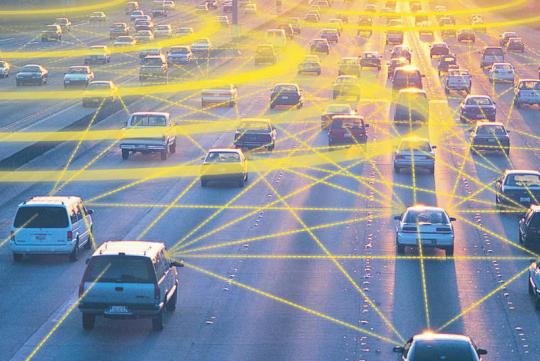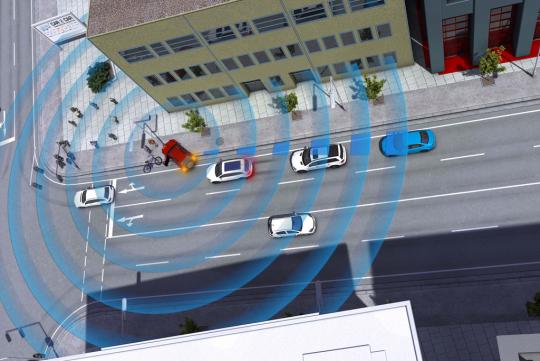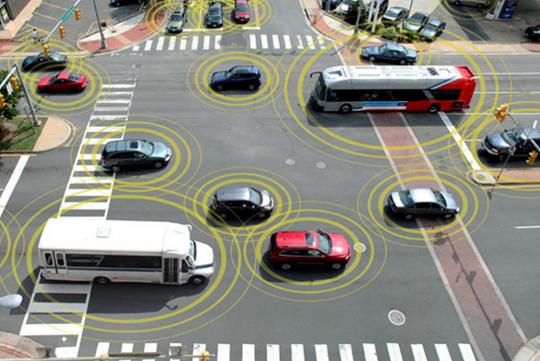US Government wants to make cars talk to each other
US Government wants to make cars talk to each other

 The Obama administration said it is taking a first step toward requiring that future cars and light trucks be equipped with technology that enables them to warn each other of potential danger in time to avoid collisions.
The Obama administration said it is taking a first step toward requiring that future cars and light trucks be equipped with technology that enables them to warn each other of potential danger in time to avoid collisions.
A research report released by the National Highway Traffic Safety Administration estimates that the technology could eventually prevent as many as 592,000 left-turn and intersection crashes a year, saving 1,083 lives. The agency said it will begin drafting rules to require the technology in new vehicles.
The technology uses a radio signal to continually transmit a vehicle's position, heading, speed and other information. Similarly equipped cars and trucks would receive the same information, and their computers would alert drivers to an impending collision.
A car would "see" when another car or truck equipped with the same technology was about to run a red light, even if that vehicle were hidden around a corner. A car would also know when a car several vehicles ahead in a line of traffic had made a sudden stop and alert the driver even before the brake lights of the vehicle directly in front illuminate. The technology works up to about 300 yards away.
If communities choose to invest in the technology, roadways and traffic lights could start talking to cars, as well, sending warnings of traffic congestion or road hazards ahead in time for drivers to take a detour.
The technology is separate from automated safety features using sensors and radar that are already being built into some high-end vehicles today and which are seen as the basis for future self-driving cars. But government and industry officials see the two technologies as compatible. If continuous conversations between cars make driving safer, then self-driving cars would become safer as well.
Transportation Secretary Anthony Foxx called the vehicle-to-vehicle technology "the next great advance in saving lives."
"This technology could move us from helping people survive crashes to helping them avoid crashes altogether — saving lives, saving money and even saving fuel thanks to the widespread benefits it offers," Foxx said.
It will take time for the technology to reach its full effectiveness since the current fleet of vehicles on the road will have to turn over or be retrofitted. Once a critical mass of vehicles is equipped with the technology, they are expected to be able to follow each other safely at a close, pre-set distance on highways. Such "platoons" or "road trains" hold the potential to enhance the flow of traffic and save fuel.
The information sent between vehicles does not identify those vehicles, but merely contains basic safety data, NHTSA said. "The system as contemplated contains several layers of security and privacy protection to ensure that vehicles can rely on messages sent from other vehicles," the agency said.
Adding the technology to new vehicles or retrofitting existing ones is expected to cost about US$341 to US$350 per vehicle in 2020, but could decrease by more than US$100 over time as manufacturers gain experience making the devices, the safety administration report said.
The Alliance of Automobile Manufacturers and the Association of Global Automakers praised the technology, but avoided commenting directly on the government's intention to require the technology in new cars. Instead, both groups urged the Federal Communications Commission to preserve the 5.9 GHz radio frequency for vehicle-to-vehicle communications.
The frequency was initially expected to be dedicated to transportation technologies, but the commission has said it is exploring whether that frequency can be used for other wireless demands as well.






2 Comments
Recommended Comments
Create an account or sign in to comment
You need to be a member in order to leave a comment
Create an account
Sign up for a new account in our community. It's easy!
Register a new accountSign in
Already have an account? Sign in here.
Sign In Now